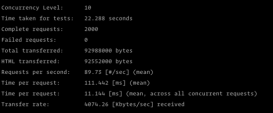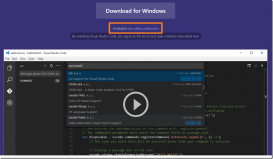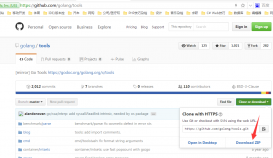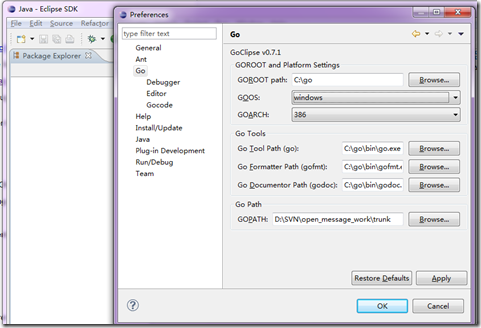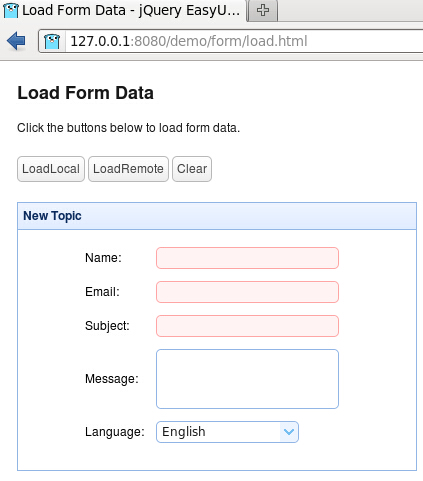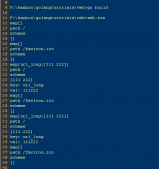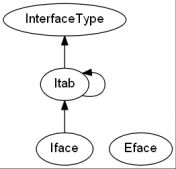在开发高并发系统时有三把利器用来保护系统:缓存、降级和限流!为了保证在业务高峰期,线上系统也能保证一定的弹性和稳定性,最有效的方案就是进行服务降级了,而限流就是降级系统最常采用的方案之一。
这里为大家推荐一个开源库 https://github.com/didip/tollbooth 但是,如果您想要一些简单的、轻量级的或者只是想要学习的东西,实现自己的中间件来处理速率限制并不困难。今天我们就来聊聊如何实现自己的一个限流中间件
首先我们需要安装一个提供了 Token bucket (令牌桶算法)的依赖包,上面提到的toolbooth 的实现也是基于它实现的
|
1
|
$ go get golang.org/x/time/rate |
好了我们先看Demo代码的实现:
limit.go
|
1
2
3
4
5
6
7
8
9
10
11
12
13
14
15
16
17
18
19
20
|
package mainimport ( "net/http" "golang.org/x/time/rate")var limiter = rate.NewLimiter(2, 5)func limit(next http.Handler) http.Handler { return http.HandlerFunc(func(w http.ResponseWriter, r *http.Request) { if limiter.Allow() == false { http.Error(w, http.StatusText(429), http.StatusTooManyRequests) return } next.ServeHTTP(w, r) })} |
main.go
|
1
2
3
4
5
6
7
8
9
10
11
12
13
14
15
16
17
|
package mainimport ( "net/http")func main() { mux := http.NewServeMux() mux.HandleFunc("/", okHandler) // Wrap the servemux with the limit middleware. http.ListenAndServe(":4000", limit(mux))}func okHandler(w http.ResponseWriter, r *http.Request) { w.Write([]byte("OK"))} |
我们看看 rate.NewLimiter的源码:
|
1
2
3
4
5
6
7
8
9
10
11
12
13
14
15
16
17
18
19
20
21
22
23
24
25
26
27
28
29
30
31
32
33
34
35
36
37
38
39
40
41
42
43
44
45
46
47
48
49
50
51
52
53
54
55
56
57
58
59
60
61
62
63
64
65
66
67
68
69
70
71
72
73
74
75
76
77
78
79
80
81
82
83
84
85
86
87
88
89
90
91
92
93
94
95
96
97
98
99
100
101
102
103
104
105
106
107
108
109
110
111
112
113
114
115
116
117
118
119
120
121
122
123
124
125
126
127
128
129
130
131
132
133
134
135
136
137
138
139
140
141
142
143
144
145
146
147
148
149
150
151
152
153
154
155
156
157
158
159
160
161
162
163
164
165
166
167
168
169
170
171
172
173
174
175
176
177
178
179
180
181
182
183
184
185
186
187
188
189
190
191
192
193
194
195
196
197
198
199
200
201
202
203
204
205
206
207
208
209
210
211
212
213
214
215
216
217
218
219
220
221
222
223
224
225
226
227
228
229
230
231
232
233
234
235
236
237
238
239
240
241
242
243
244
245
246
247
248
249
250
251
252
253
254
255
256
257
258
259
260
261
262
263
264
265
266
267
268
269
270
271
272
273
274
275
276
277
278
279
280
281
282
283
284
285
286
287
288
289
290
291
292
293
294
295
296
297
298
299
300
301
302
303
304
305
306
307
308
309
310
311
312
313
314
315
316
317
318
319
320
321
322
323
324
325
326
327
328
329
330
331
332
333
334
335
336
337
338
339
340
341
342
343
344
345
346
347
348
349
350
351
352
353
354
355
356
357
358
359
360
361
362
363
364
365
366
367
368
|
// Copyright 2015 The Go Authors. All rights reserved.// Use of this source code is governed by a BSD-style// license that can be found in the LICENSE file.// Package rate provides a rate limiter.package rateimport ( "fmt" "math" "sync" "time" "golang.org/x/net/context")// Limit defines the maximum frequency of some events.// Limit is represented as number of events per second.// A zero Limit allows no events.type Limit float64// Inf is the infinite rate limit; it allows all events (even if burst is zero).const Inf = Limit(math.MaxFloat64)// Every converts a minimum time interval between events to a Limit.func Every(interval time.Duration) Limit { if interval <= 0 { return Inf } return 1 / Limit(interval.Seconds())}// A Limiter controls how frequently events are allowed to happen.// It implements a "token bucket" of size b, initially full and refilled// at rate r tokens per second.// Informally, in any large enough time interval, the Limiter limits the// rate to r tokens per second, with a maximum burst size of b events.// As a special case, if r == Inf (the infinite rate), b is ignored.// See https://en.wikipedia.org/wiki/Token_bucket for more about token buckets.//// The zero value is a valid Limiter, but it will reject all events.// Use NewLimiter to create non-zero Limiters.//// Limiter has three main methods, Allow, Reserve, and Wait.// Most callers should use Wait.//// Each of the three methods consumes a single token.// They differ in their behavior when no token is available.// If no token is available, Allow returns false.// If no token is available, Reserve returns a reservation for a future token// and the amount of time the caller must wait before using it.// If no token is available, Wait blocks until one can be obtained// or its associated context.Context is canceled.//// The methods AllowN, ReserveN, and WaitN consume n tokens.type Limiter struct { limit Limit burst int mu sync.Mutex tokens float64 // last is the last time the limiter's tokens field was updated last time.Time // lastEvent is the latest time of a rate-limited event (past or future) lastEvent time.Time}// Limit returns the maximum overall event rate.func (lim *Limiter) Limit() Limit { lim.mu.Lock() defer lim.mu.Unlock() return lim.limit}// Burst returns the maximum burst size. Burst is the maximum number of tokens// that can be consumed in a single call to Allow, Reserve, or Wait, so higher// Burst values allow more events to happen at once.// A zero Burst allows no events, unless limit == Inf.func (lim *Limiter) Burst() int { return lim.burst}// NewLimiter returns a new Limiter that allows events up to rate r and permits// bursts of at most b tokens.func NewLimiter(r Limit, b int) *Limiter { return &Limiter{ limit: r, burst: b, }}// Allow is shorthand for AllowN(time.Now(), 1).func (lim *Limiter) Allow() bool { return lim.AllowN(time.Now(), 1)}// AllowN reports whether n events may happen at time now.// Use this method if you intend to drop / skip events that exceed the rate limit.// Otherwise use Reserve or Wait.func (lim *Limiter) AllowN(now time.Time, n int) bool { return lim.reserveN(now, n, 0).ok}// A Reservation holds information about events that are permitted by a Limiter to happen after a delay.// A Reservation may be canceled, which may enable the Limiter to permit additional events.type Reservation struct { ok bool lim *Limiter tokens int timeToAct time.Time // This is the Limit at reservation time, it can change later. limit Limit}// OK returns whether the limiter can provide the requested number of tokens// within the maximum wait time. If OK is false, Delay returns InfDuration, and// Cancel does nothing.func (r *Reservation) OK() bool { return r.ok}// Delay is shorthand for DelayFrom(time.Now()).func (r *Reservation) Delay() time.Duration { return r.DelayFrom(time.Now())}// InfDuration is the duration returned by Delay when a Reservation is not OK.const InfDuration = time.Duration(1<<63 - 1)// DelayFrom returns the duration for which the reservation holder must wait// before taking the reserved action. Zero duration means act immediately.// InfDuration means the limiter cannot grant the tokens requested in this// Reservation within the maximum wait time.func (r *Reservation) DelayFrom(now time.Time) time.Duration { if !r.ok { return InfDuration } delay := r.timeToAct.Sub(now) if delay < 0 { return 0 } return delay}// Cancel is shorthand for CancelAt(time.Now()).func (r *Reservation) Cancel() { r.CancelAt(time.Now()) return}// CancelAt indicates that the reservation holder will not perform the reserved action// and reverses the effects of this Reservation on the rate limit as much as possible,// considering that other reservations may have already been made.func (r *Reservation) CancelAt(now time.Time) { if !r.ok { return } r.lim.mu.Lock() defer r.lim.mu.Unlock() if r.lim.limit == Inf || r.tokens == 0 || r.timeToAct.Before(now) { return } // calculate tokens to restore // The duration between lim.lastEvent and r.timeToAct tells us how many tokens were reserved // after r was obtained. These tokens should not be restored. restoreTokens := float64(r.tokens) - r.limit.tokensFromDuration(r.lim.lastEvent.Sub(r.timeToAct)) if restoreTokens <= 0 { return } // advance time to now now, _, tokens := r.lim.advance(now) // calculate new number of tokens tokens += restoreTokens if burst := float64(r.lim.burst); tokens > burst { tokens = burst } // update state r.lim.last = now r.lim.tokens = tokens if r.timeToAct == r.lim.lastEvent { prevEvent := r.timeToAct.Add(r.limit.durationFromTokens(float64(-r.tokens))) if !prevEvent.Before(now) { r.lim.lastEvent = prevEvent } } return}// Reserve is shorthand for ReserveN(time.Now(), 1).func (lim *Limiter) Reserve() *Reservation { return lim.ReserveN(time.Now(), 1)}// ReserveN returns a Reservation that indicates how long the caller must wait before n events happen.// The Limiter takes this Reservation into account when allowing future events.// ReserveN returns false if n exceeds the Limiter's burst size.// Usage example:// r, ok := lim.ReserveN(time.Now(), 1)// if !ok {// // Not allowed to act! Did you remember to set lim.burst to be > 0 ?// }// time.Sleep(r.Delay())// Act()// Use this method if you wish to wait and slow down in accordance with the rate limit without dropping events.// If you need to respect a deadline or cancel the delay, use Wait instead.// To drop or skip events exceeding rate limit, use Allow instead.func (lim *Limiter) ReserveN(now time.Time, n int) *Reservation { r := lim.reserveN(now, n, InfDuration) return &r}// Wait is shorthand for WaitN(ctx, 1).func (lim *Limiter) Wait(ctx context.Context) (err error) { return lim.WaitN(ctx, 1)}// WaitN blocks until lim permits n events to happen.// It returns an error if n exceeds the Limiter's burst size, the Context is// canceled, or the expected wait time exceeds the Context's Deadline.func (lim *Limiter) WaitN(ctx context.Context, n int) (err error) { if n > lim.burst { return fmt.Errorf("rate: Wait(n=%d) exceeds limiter's burst %d", n, lim.burst) } // Check if ctx is already cancelled select { case <-ctx.Done(): return ctx.Err() default: } // Determine wait limit now := time.Now() waitLimit := InfDuration if deadline, ok := ctx.Deadline(); ok { waitLimit = deadline.Sub(now) } // Reserve r := lim.reserveN(now, n, waitLimit) if !r.ok { return fmt.Errorf("rate: Wait(n=%d) would exceed context deadline", n) } // Wait t := time.NewTimer(r.DelayFrom(now)) defer t.Stop() select { case <-t.C: // We can proceed. return nil case <-ctx.Done(): // Context was canceled before we could proceed. Cancel the // reservation, which may permit other events to proceed sooner. r.Cancel() return ctx.Err() }}// SetLimit is shorthand for SetLimitAt(time.Now(), newLimit).func (lim *Limiter) SetLimit(newLimit Limit) { lim.SetLimitAt(time.Now(), newLimit)}// SetLimitAt sets a new Limit for the limiter. The new Limit, and Burst, may be violated// or underutilized by those which reserved (using Reserve or Wait) but did not yet act// before SetLimitAt was called.func (lim *Limiter) SetLimitAt(now time.Time, newLimit Limit) { lim.mu.Lock() defer lim.mu.Unlock() now, _, tokens := lim.advance(now) lim.last = now lim.tokens = tokens lim.limit = newLimit}// reserveN is a helper method for AllowN, ReserveN, and WaitN.// maxFutureReserve specifies the maximum reservation wait duration allowed.// reserveN returns Reservation, not *Reservation, to avoid allocation in AllowN and WaitN.func (lim *Limiter) reserveN(now time.Time, n int, maxFutureReserve time.Duration) Reservation { lim.mu.Lock() defer lim.mu.Unlock() if lim.limit == Inf { return Reservation{ ok: true, lim: lim, tokens: n, timeToAct: now, } } now, last, tokens := lim.advance(now) // Calculate the remaining number of tokens resulting from the request. tokens -= float64(n) // Calculate the wait duration var waitDuration time.Duration if tokens < 0 { waitDuration = lim.limit.durationFromTokens(-tokens) } // Decide result ok := n <= lim.burst && waitDuration <= maxFutureReserve // Prepare reservation r := Reservation{ ok: ok, lim: lim, limit: lim.limit, } if ok { r.tokens = n r.timeToAct = now.Add(waitDuration) } // Update state if ok { lim.last = now lim.tokens = tokens lim.lastEvent = r.timeToAct } else { lim.last = last } return r}// advance calculates and returns an updated state for lim resulting from the passage of time.// lim is not changed.func (lim *Limiter) advance(now time.Time) (newNow time.Time, newLast time.Time, newTokens float64) { last := lim.last if now.Before(last) { last = now } // Avoid making delta overflow below when last is very old. maxElapsed := lim.limit.durationFromTokens(float64(lim.burst) - lim.tokens) elapsed := now.Sub(last) if elapsed > maxElapsed { elapsed = maxElapsed } // Calculate the new number of tokens, due to time that passed. delta := lim.limit.tokensFromDuration(elapsed) tokens := lim.tokens + delta if burst := float64(lim.burst); tokens > burst { tokens = burst } return now, last, tokens}// durationFromTokens is a unit conversion function from the number of tokens to the duration// of time it takes to accumulate them at a rate of limit tokens per second.func (limit Limit) durationFromTokens(tokens float64) time.Duration { seconds := tokens / float64(limit) return time.Nanosecond * time.Duration(1e9*seconds)}// tokensFromDuration is a unit conversion function from a time duration to the number of tokens// which could be accumulated during that duration at a rate of limit tokens per second.func (limit Limit) tokensFromDuration(d time.Duration) float64 { return d.Seconds() * float64(limit)} |
算法描述:
用户配置的平均发送速率为r,则每隔1/r秒一个令牌被加入到桶中(每秒会有r个令牌放入桶中),桶中最多可以存放b个令牌。如果令牌到达时令牌桶已经满了,那么这个令牌会被丢弃;
实现用户粒度的限流
虽然在某些情况下使用单个全局速率限制器非常有用,但另一种常见情况是基于IP地址或API密钥等标识符为每个用户实施速率限制器。我们将使用IP地址作为标识符。简单实现代码如下:
|
1
2
3
4
5
6
7
8
9
10
11
12
13
14
15
16
17
18
19
20
21
22
23
24
25
26
27
28
29
30
31
32
33
34
35
36
37
38
39
40
41
42
43
44
45
46
47
48
49
50
51
52
53
54
55
56
57
58
59
60
61
62
63
64
65
66
67
68
69
70
71
|
package mainimport ( "net/http" "sync" "time" "golang.org/x/time/rate")// Create a custom visitor struct which holds the rate limiter for each// visitor and the last time that the visitor was seen.type visitor struct { limiter *rate.Limiter lastSeen time.Time}// Change the the map to hold values of the type visitor.var visitors = make(map[string]*visitor)var mtx sync.Mutex// Run a background goroutine to remove old entries from the visitors map.func init() { go cleanupVisitors()}func addVisitor(ip string) *rate.Limiter { limiter := rate.NewLimiter(2, 5) mtx.Lock() // Include the current time when creating a new visitor. visitors[ip] = &visitor{limiter, time.Now()} mtx.Unlock() return limiter}func getVisitor(ip string) *rate.Limiter { mtx.Lock() v, exists := visitors[ip] if !exists { mtx.Unlock() return addVisitor(ip) } // Update the last seen time for the visitor. v.lastSeen = time.Now() mtx.Unlock() return v.limiter}// Every minute check the map for visitors that haven't been seen for// more than 3 minutes and delete the entries.func cleanupVisitors() { for { time.Sleep(time.Minute) mtx.Lock() for ip, v := range visitors { if time.Now().Sub(v.lastSeen) > 3*time.Minute { delete(visitors, ip) } } mtx.Unlock() }}func limit(next http.Handler) http.Handler { return http.HandlerFunc(func(w http.ResponseWriter, r *http.Request) { limiter := getVisitor(r.RemoteAddr) if limiter.Allow() == false { http.Error(w, http.StatusText(429), http.StatusTooManyRequests) return } next.ServeHTTP(w, r) })} |
当然这只是一个简单的实现方案,如果我们要在微服务的API-GateWay中去实现限流还是要考虑很多东西的。建议大家可以看看 https://github.com/didip/tollbooth 的源码。
以上就是本文的全部内容,希望对大家的学习有所帮助,也希望大家多多支持服务器之家。
原文链接:https://xiequan.info/go如何实现http请求限流/



